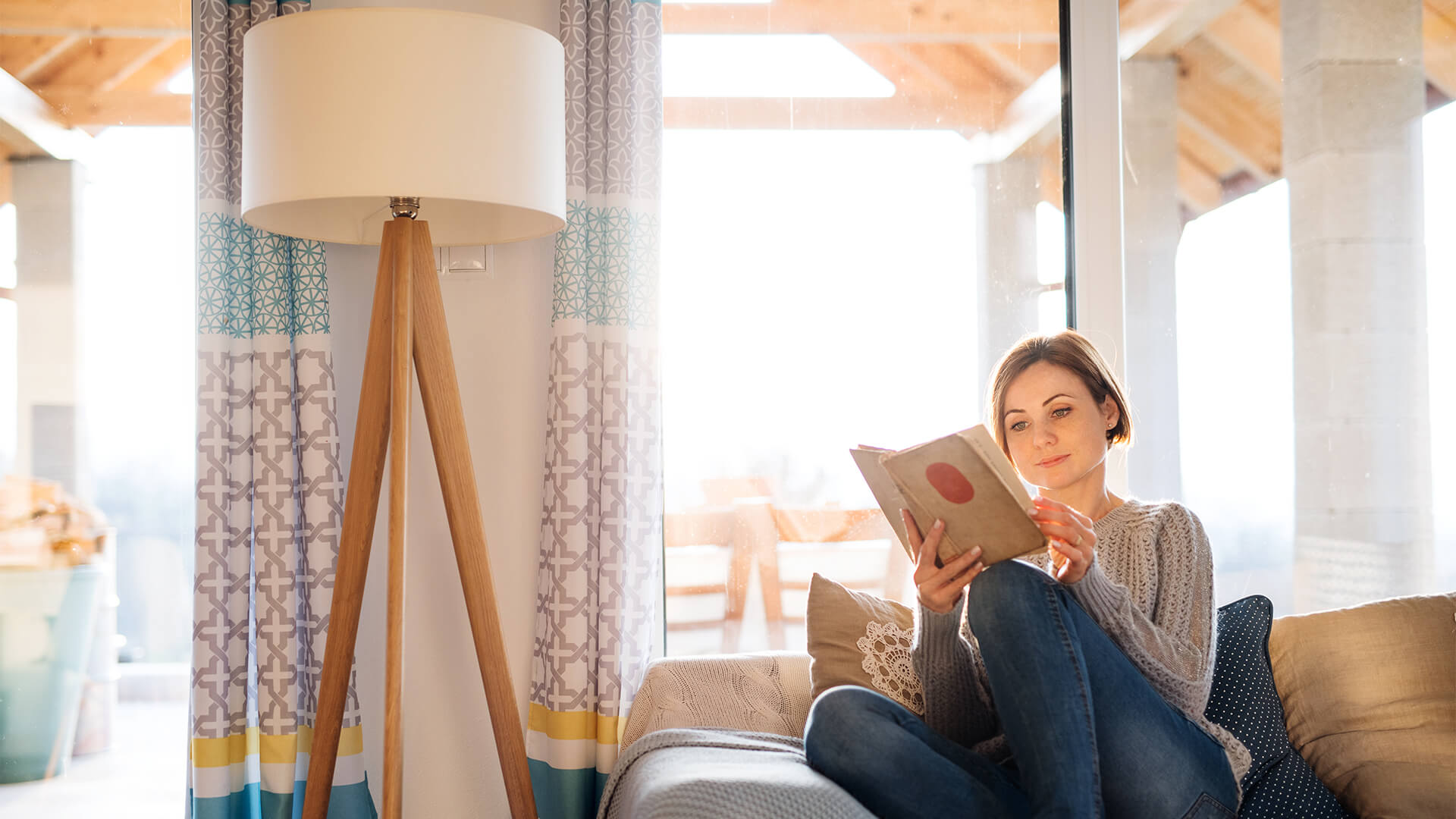By Evelyn Long, Editor-in-Chief of Renovated.
Renovations can make a house quieter and easier to live in, whether a homeowner has noisy neighbours, lives in a busy area or needs extra peace for their profession. Most homes are not completely soundproof, but several projects can greatly reduce the amount of noise that travels into and out of rooms.
Here are the renovations that add peace and quiet to a home, from major changes to minor adjustments.
Install Carpeting
Carpeting dampens sound much more than hardwood or tile floors. The padding carpet provides doesn’t reflect sounds like wood or other low-density materials, making it a great way to keep noises from becoming amplified in a room or travelling between floors.
Wool and jute are excellent carpet materials for soundproofing due to their thickness. Thick-cut felt and plush carpets are also effective. Carpeting absorbs sound by trapping around 35% of soundwaves in its fibres. The more it has, the better it will work.
Homeowners can glue down a carpet, stretch it or cut it to fit a room. Adding a pad is a great way to increase soundproofing by adding thickness and preventing fibres from breaking down quickly.
Apply Wallpaper
Wallpaper is more than a design choice. Certain wallpapers can also significantly block the noise coming into or out of a room.
Wallpaper can thicken walls and dampen sounds within a room. It is installed with paste or a peel-and-stick method. Wallpaper can be removed and replaced easily, and many types are washable.
There is even specialised acoustic wallpaper built to block ambient noise from entering the room. It can block sound frequencies from devices or noisy neighbours.
Add Sealant
Even after soundproofing a room, little cracks and holes can still bring in unwanted noise. Adding a sealant in these areas can help block those residual sounds from entering a room.
Various sealants can be applied to cracks, such as acrylic, vinyl and silicone. Specialised soundproofing options can be used on walls or ceilings.
Disruptive sounds can enter the room whenever there is an opening between walls or tiles and around doors. Sealants are a great solution to the problem.
Use Weatherstripping
Weatherstripping is another great way to stop excess sounds from entering a room through cracks. Why? Weatherstripping blocks sounds in empty spaces, and its thickness also helps absorb noises.
It’s most commonly used around doors and windows, filling the space between them and the floor, ceiling or window seal. Weatherstripping is especially useful for garage doors if an owner works in the space or wants to keep out noisy pests. As a bonus, weatherstripping is widely known for helping with energy efficiency, too.
Try Acoustic Wall Paneling
Acoustic wall panels are made with foam or fabric designed to absorb room sounds. They can be mounted onto walls and ceilings to trap noises.
The thicker the panelling, the better the sound absorption. However, the point of all acoustic panelling is to dampen sounds.
Homeowners that can’t afford to purchase acoustic panelling can get a similar effect by making their own out of a foam mattress pad.
Change the Window Treatments
Homes with shutters or blinds likely don’t have the soundproofing they should. Curtains or drapes are the best solutions to blocking sound from windows as they solidly cover the surface. The thicker they are, the more sound protection a room will have.
Polyester, satin and velvet are common curtain materials used for soundproofing. Some companies even specialize in soundproof options.
Consider Storm Windows and Doors
Installing storm doors and windows provides an extra layer of protection against outside sounds.
Even if an exterior door or window has a tight seal, it still could let noise in by being too thin. Adding storm windows and doors insulates a home and makes the openings thicker and more soundproof.
Rearrange the Furniture
Placing tall furniture against walls can help create a thicker barrier between rooms. A taller, thicker bookcase is a better soundproofing choice than a shorter, thinner one. This is beneficial for renters who may not be able to do any permanent renovations.
Plush chairs, couches and blankets can also absorb sound from within the room.
Opt for Central Air Conditioning
Adding central air conditioning to a home can be a costly endeavour, but it may be worth it for owners with long-term soundproofing needs.
Window air conditioning units can be loud and don’t provide a thick or tight enough seal to prevent outside noise from entering a space.
Central air eliminates these units altogether, allowing an owner to keep their windows sealed.
Another benefit is that an HVAC system’s fan will circulate cooled air. Even if someone turns up the thermostat so no noise is coming from the vents, the air will stay cooler longer.
To install central air conditioning, the homeowner must ensure the house has the correct ductwork.
Making a Quieter Home
Through time and patience, any homeowner can make adjustments that lessen the sounds in their home.
These options provide everyone with a soundproofing solution, from inexpensive to pricey. A quiet home makes for a better place to work and relax.
































